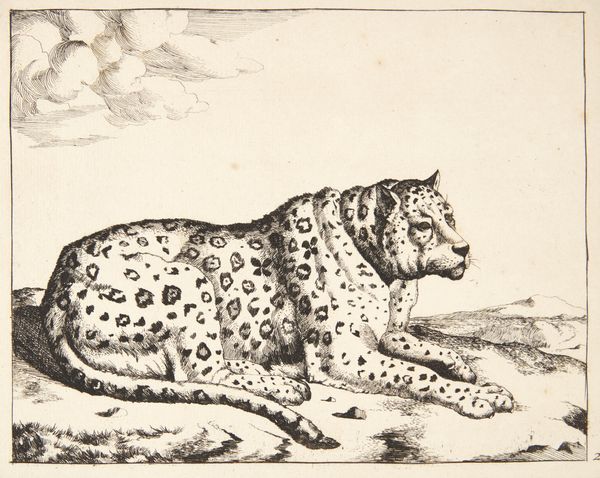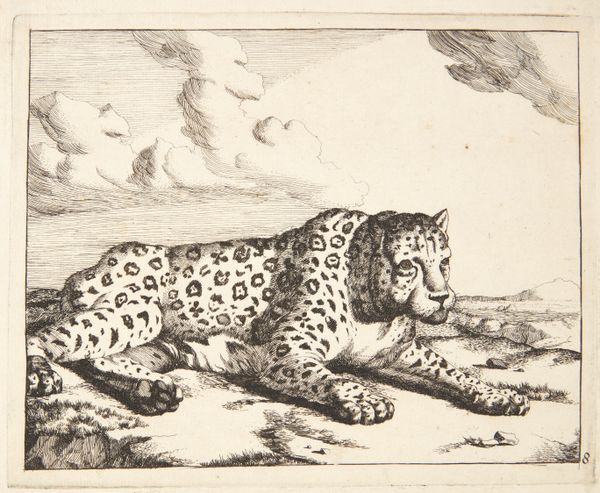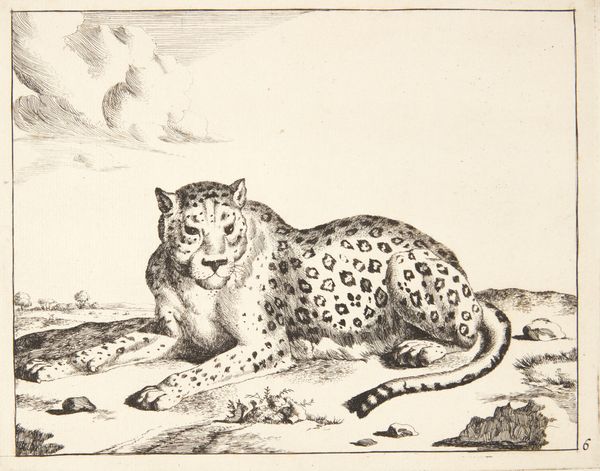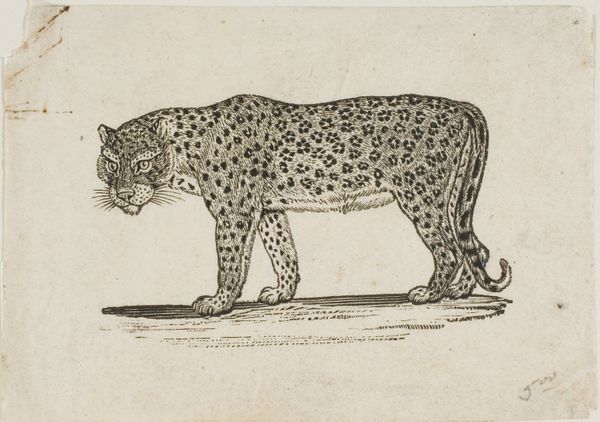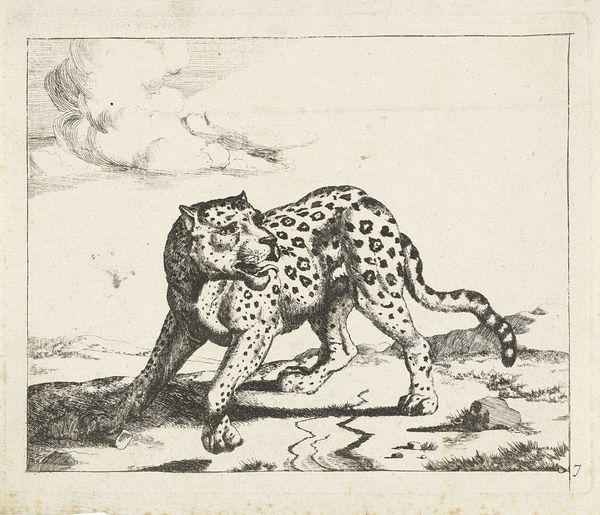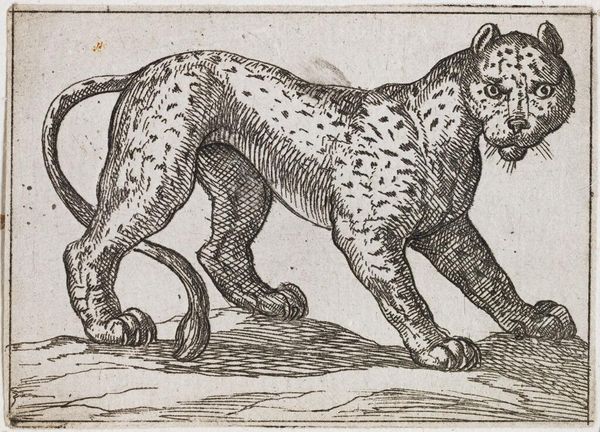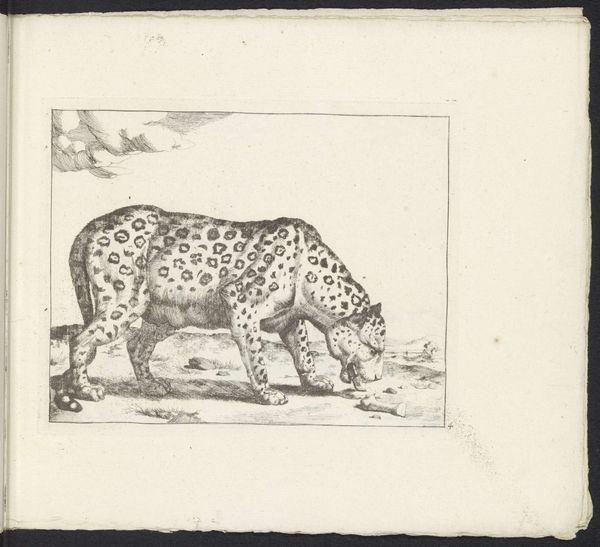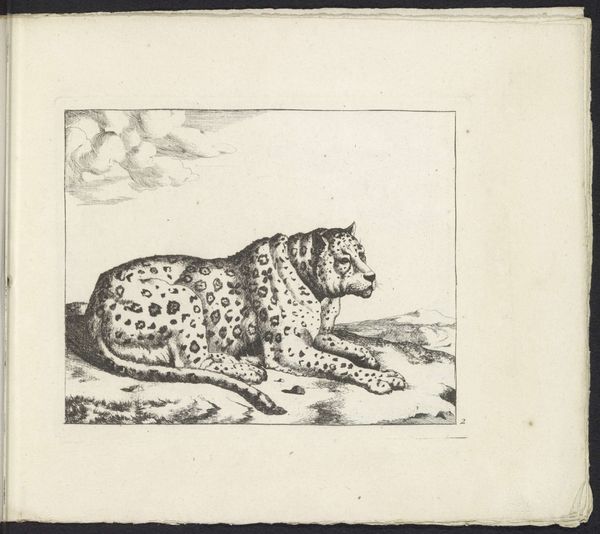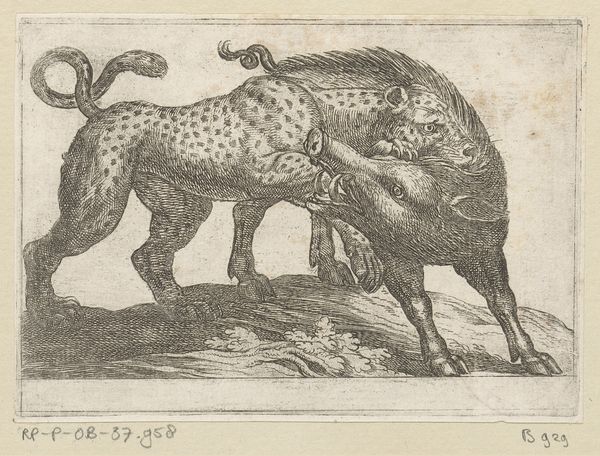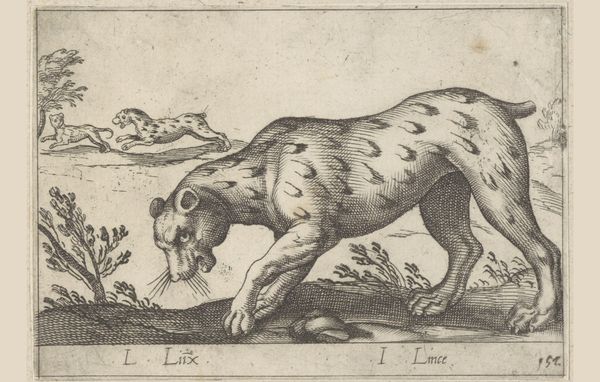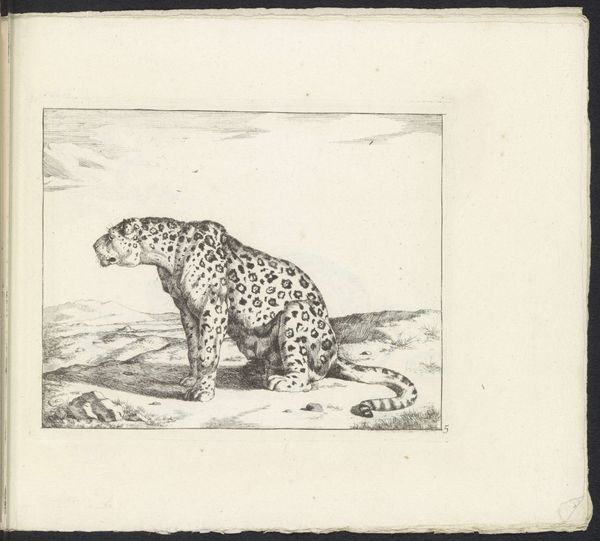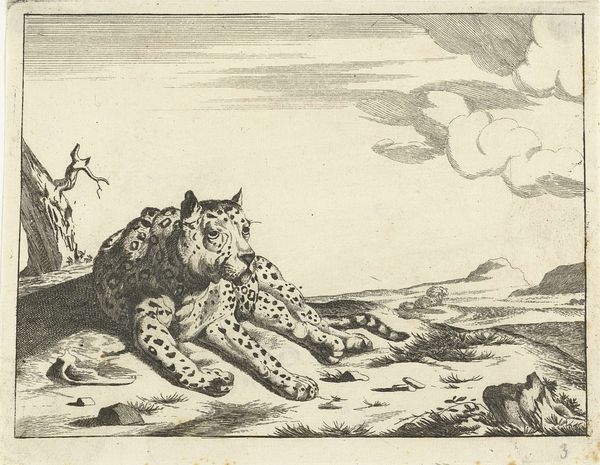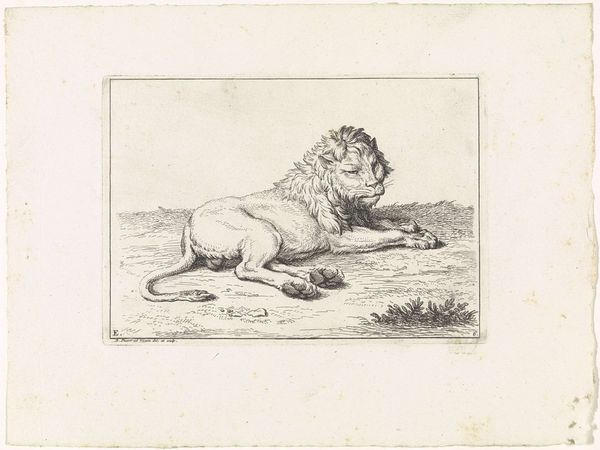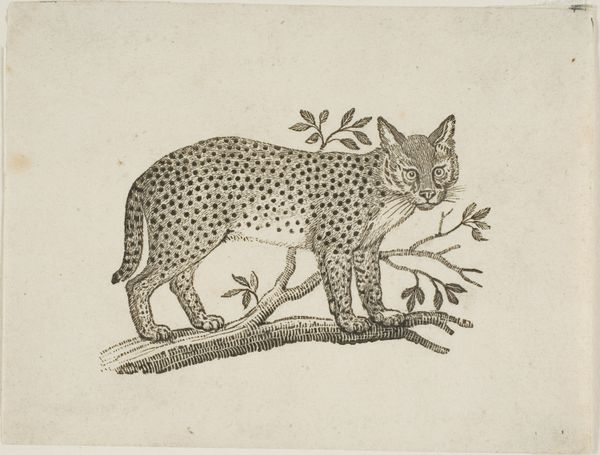
drawing, print, etching, ink
#
drawing
#
ink drawing
#
baroque
#
animal
# print
#
etching
#
landscape
#
figuration
#
ink
#
realism
Dimensions: 136 mm (height) x 173 mm (width) (plademaal)
Editor: Here we have Marcus de Bye's "Hunleopard," an ink etching and print dating from between 1638 and 1690. The animal dominates the composition; it looks powerful, almost stoic. What's your take on this work? Curator: What strikes me is the leopard's presence, removed from its native habitat and placed within the context of European art. Consider how animals, especially exotic ones, were often depicted as symbols of power and dominion in the Baroque period. Does this portrayal celebrate nature, or does it reinforce a human-centric worldview where even the wild is subject to control and observation? Editor: That's a compelling perspective! I hadn't considered the power dynamics embedded within the image itself. Does the style – almost a hyper-realistic approach – further contribute to that sense of control? Curator: Absolutely. The detailed rendering almost objectifies the animal, reducing it to a specimen. Think about the rise of natural history and scientific exploration during this time. What role did these detailed depictions play in shaping European understandings, and often misunderstandings, of the natural world and its inhabitants, and to what extent were those shaped by colonial attitudes? Editor: So, it's less about the animal itself and more about what it represents within the societal context of the time? Curator: Precisely. This image becomes a lens through which we can examine Baroque attitudes towards nature, power, and even early forms of scientific imperialism. It urges us to consider what's *not* depicted. Where is this animal? What’s its story? What were the ethics around depicting exotic animals at this point in time? Editor: I see what you mean! I hadn't thought about the ethics and politics embedded within a simple animal drawing. Curator: Art offers so much more than what meets the eye. It holds up a mirror to society, revealing its assumptions, values, and the complex systems of power that shape our perceptions. Editor: Definitely. It's fascinating how much historical and cultural context can be packed into a single image. I'll never look at animal drawings the same way again.
Comments
No comments
Be the first to comment and join the conversation on the ultimate creative platform.
